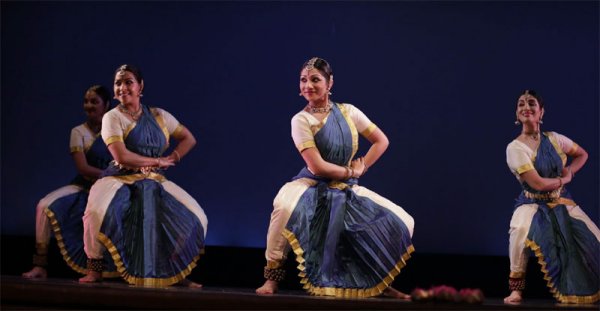
|   |

|   |
The Cloud Messenger - Uday Dandavate September 25, 2014 The experience of intimate communication has taken on a new dimension in a world of online dating. Thanks to the Cloud, we are now are able to upload images, videos, and stories so that our dear ones can be a part of our meaningful moments no matter how far they live. Geographic Positioning System (GPS) based tools allow us to spot our loved ones based on their geographic coordinates  Photo: Eli Jacobs-Fantauzzi  Photo: Shashank Deshpande Almost 1600 years, before Cloud computing became a ubiquitous part of our lives, Kalidasa penned the Megdhoot (literally meaning the cloud messenger) wherein he describes how a Yaksha, a subject of King Kubera (the god of wealth), convinces a passing cloud to take a message to his wife. In this poetry, Yaksha describes the many beautiful landscapes the cloud will pass on its northward course to the city of Alaka, where his wife is waiting for him to return. The idea of a cloud carrying a message to someone very dear to one’s heart and being able to incorporate details of geographic coordinates and visual information to reach the right person was conceptualized by Kalidasa even before computing became a part of human imagination. I experienced the beauty of Kalidasa’s imagination through the Bharatanatyam dance presentation of Meghdoot by Nava Dance Theater in San Francisco. Nadhi Thekkek, Sophia Valath and Arun Mathai choreographed this splendid performance with music composition by GS Rajan. The performance was followed by a panel discussion. Lily Kharrazi, Program Manager at Alliance for California Traditional Arts, who was moderating the panel asked, “To what extent does a traditional form like Bharatanatyam allow deviation in its form?” She was provoking a response from the assembled panel of traditional artists. In my view the Bharatanatyam artists did a wonderful job of balancing the traditional vocabulary of the form with contemporary elegance, while serving the aesthetic sensibilities of a contemporary audience. The individual dancers’ gestures and body movements maintained the authentic vocabulary of Bharatanatyam. The elaborate ornamentation typically present in a traditional Indian dance costume was simplified. This brought to the performance a balance between the intricacy of the traditional form and minimalist style of modern dance. The result reminded me of contemporary Japanese design, which preserves the core element of Japanese craft traditions, while offering elegance, convenience and comfort of simplified forms. The group choreography was refreshing and it was appealing to an audience that is exposed to a wide range of contemporary dance forms. Sophisticated use of space contributed to its overall appeal. The creativity and expressivity of the choreographers and the performers found freedom, without diluting the essence of the traditional form.  Photo: Eli Jacobs-Fantauzzi Music composition by GS Rajan provided another crucial link between the traditional and contemporary elements. GS Rajan is an accomplished classical flautist, whose work has been acknowledged by Pandit Ravi Shankar and Zubin Mehta. While the vocalist, percussionist and nattuvanar connected the performance to its traditional roots, Rajan’s masterly and playful variations on flute transformed the performance into an eclectic experience. While the Yaksha (Arun Mathai) and the Yakshi (Nadhi Thekkek), the main characters of the story, delighted the audience with a perfectly synchronized performance, the key feature was depiction of the movement of the cloud by a group of accomplished dancers led by Sophia Valath. The Cloud Messenger was an artistic representation of pure Indian ethos that can inspire younger generation to experiment with their inner urges for contemporary expression. Kudos to Nava Dance Theater and CounterPulse for sponsoring the project. Uday Dandavate is a Co-founder and CEO of SonicRim, a San Francisco based global design research consulting firm. |